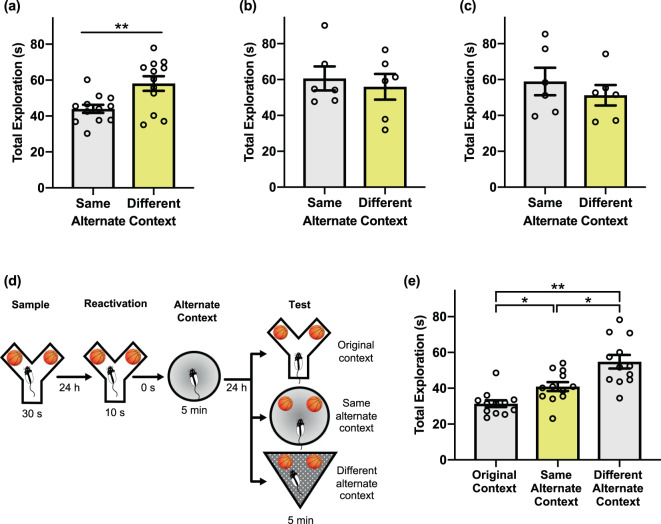Figure 2.
Behavioural performance in the PROMM task. (a) Total exploration of the sampled objects in the test phase is greater when the objects are presented in a different apparatus than the one explored immediately after memory reactivation (n = 12). This pattern is consistent with the interpretation that rats perceive the same alternate context-object configuration as more familiar than the different alternate context-object configuration. (b) When the reactivation phase is omitted, there is no distinction between test phase exploration of the same alternate context and different alternate context condition (n = 12). (c) There is no difference in test phase object exploration between the alternate context conditions when the alternate arena is presented 6 h after object memory trace reactivation (n = 12). (d) Memory for the original learning was assessed. In the test phase, rats explored the sample objects in either the original context (i.e. the Y-apparatus), the same alternate context as post-reactivation, or a different alternate context (n = 12). (e) Memory for the original object-context configuration appears to be intact when exploration of the sample objects is measured in the Y-apparatus during the test phase. Object exploration in the Y-apparatus during test is lower than in either the different alternate context or the same alternate context, indicating that the original object memory is not detrimentally affected by post-reactivation updating. Object exploration in the same alternate context condition was lower than object exploration in the different alternate context, replicating the effect reported in (a). *p < 0.05, **p < 0.01.

